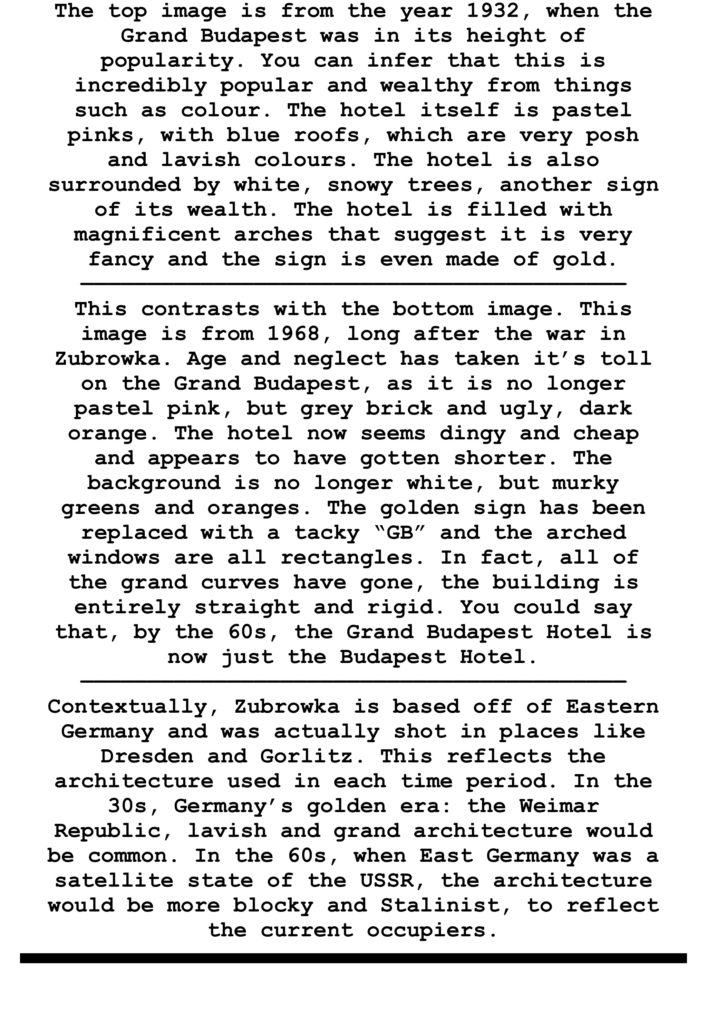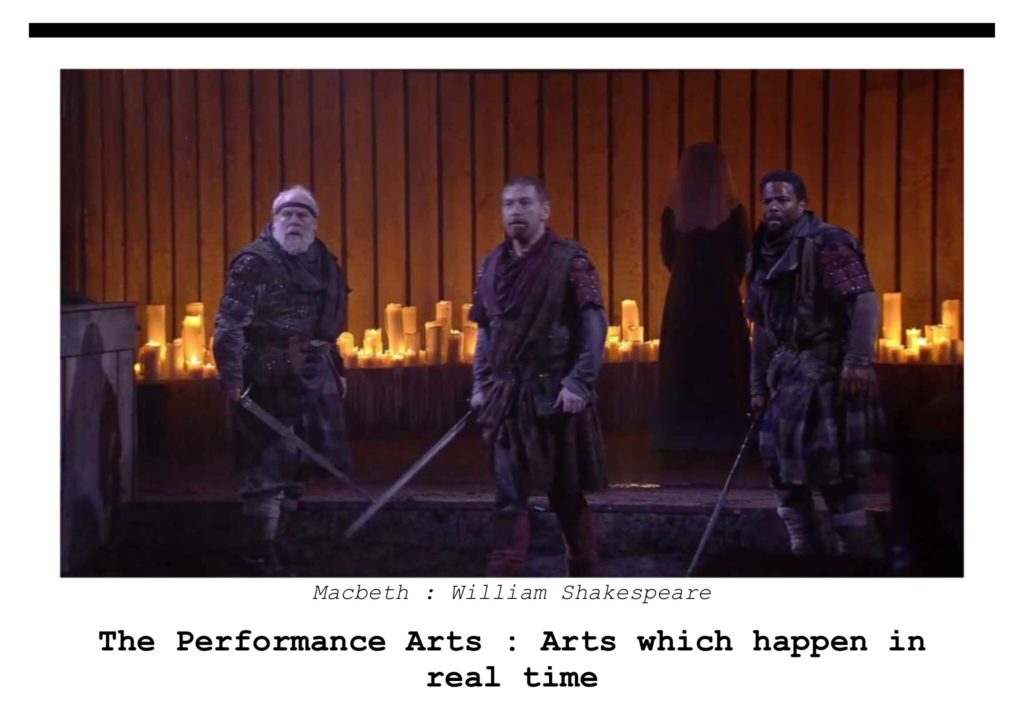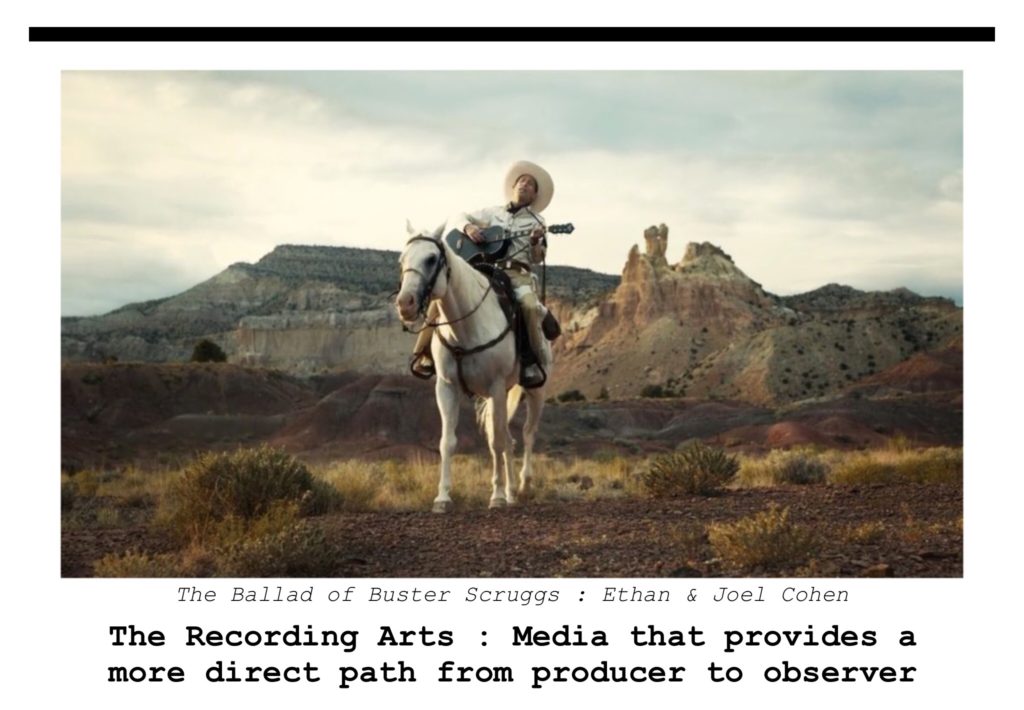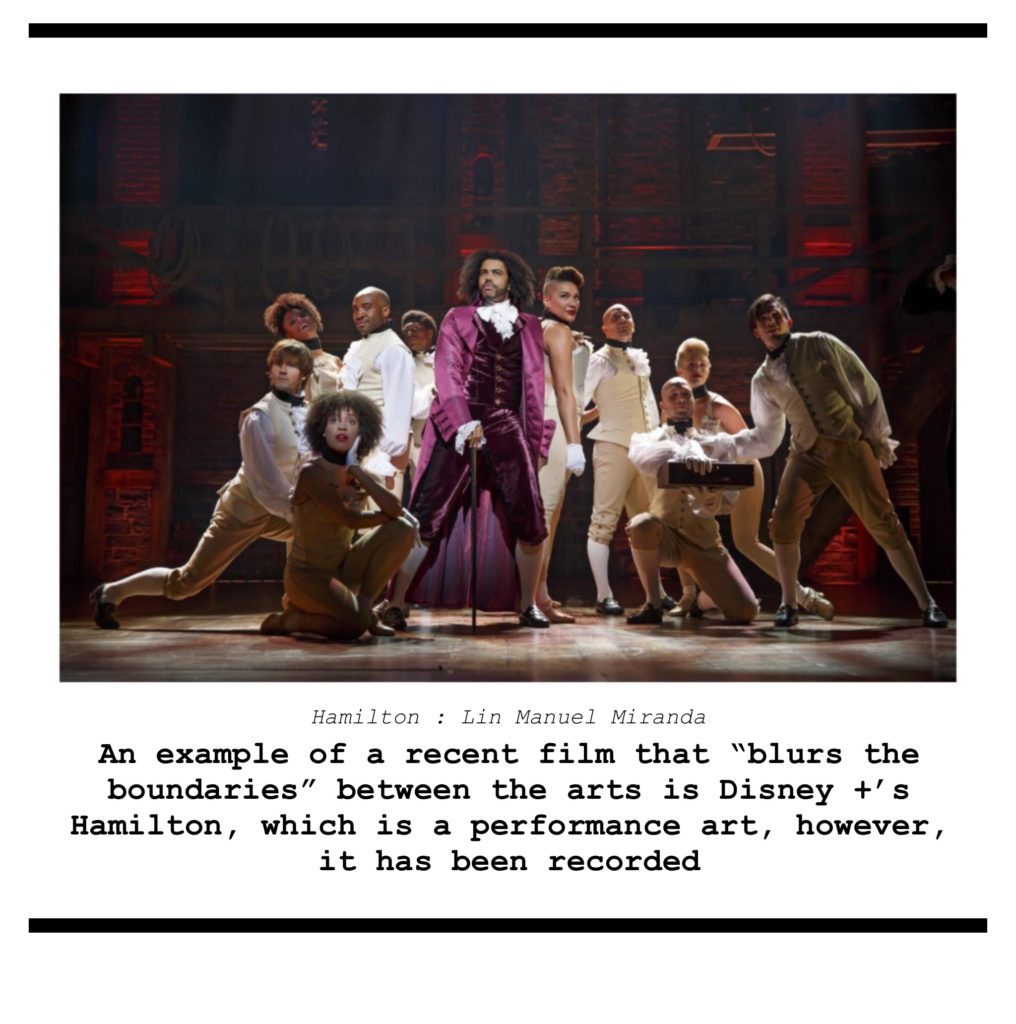To answer this question I will be focusing on one film, (2004) Shaun of the Dead, written by Edgar Wright and Simon Pegg and directed by Edgar Wright. A comedy horror zombie film where we follow Shaun, a salesman as he grows up and starts to put his life in the right direction during a zombie apocalypse. The main ethnicity represented in this film are all white british people with one or two exceptions. The film opens with Shaun and his girlfriend Liz discussing Ed, (Shaun’s friend who gets in the way of their relationship), Liz doesn’t want to be rid of Ed but rather a balance between her and Ed. One of the first shots of the film is Shaun and Liz talking about Ed with Ed in the background between them which quickly establishes one of the main plot point of the film, then next shot also introduces us to Liz’s flatmates Dianne and David, these opening shots also quickly establish the character dynamic of the group. In this film we see a lot of Edgar Wright’s unique cinematography and editing, using up close shots, quick zooms and quick cuts he can turn a mundane task such as making breakfast into an action packed sequence. In these rapid scenes he also uses sound effects to give each action such as grabbing a knife, spreading jam and putting milk in the fridge a level of intensity and speed. Because of the staging and sound design of this film we continually see and hear things that hint at zombies or danger but due to the staging and mise-en-scene Shaun never picks up on these things or never has a chance to properly look at what is going on. Throughout the film we see Shaun finally grow up and start to point his life in some sort of direction as he makes plans to combat the zombie apocalypse, he goes from a lazy slob coasting through life to a selfless hero who disregards his own safety to try and keep the people he loves safe and is selfless enough to shoot his own mother to protect his friends. Later in the film Shaun and his friends and mum are inside a pub after evading the zombies and after turning the power on they are confronted by a zombie and Don’t Stop me now by Queen begins to play and they whack the zombie in time to the song as the camera does constant arc shots around the chaos which makes this scene excellent. As the film reaches its climax Shaun’s mum, Dianne and David all die in gory and gruesome fashions and Liz Shaun and Ed hide in the basement, luckily they are saved in the nick of time by the military. We then cut to 6 months later where zombies are being used for entertainment on TV and we see Shaun with Liz in Shaun’s house, we see him go to the garden shed where Ed as a zombie is chained up playing video games and Shaun joins him, then the film closes with another Queen track “You’re my Best Friend” showing how the two are still close friends even though one is a zombie.
Monthly Archives: September 2020
Filters
Summer Task What Makes a good film.
Much like all other different types of artform, films can be extremely subjective depending on the type of person the viewer is and how the particular film makes them feel. That being said there are certain features that a film has to posses to be considered “good.” There are several main pillars that make up a good film. A few of these are Script, Characters, Performance and Visuals. Although vital, all of these are pointless if the movie doesn’t follow a good story that captivates the viewer and the director has put passion into.
The script is made of three parts. plot, dialogue and conflict. You will find it difficult to find a successful film that doesn’t contain conflict, or put in more simpler terms “when things go bad.” Conflict plays a major role in most good films because it allows the story to progress and it also allows directors to develop their characters further, as does dialogue which has a major role in not only defining characters but also setting the tone of the film. The Plot of a good movie has to have a sequence of events that flow together well and keep the viewer captivated. The plot of a film does not have to be linear or “easy to understand” but it does have to make sense, an example of a good film that does not follow a linear plot of a traditional film would be Inception.
Characters in a film are all made up of flaws and desires. For example the schoolboy that wants to impress his parents but keeps on failing, or the hero that wants to protect his city but goes too far with violence. A characters main purpose is to control the viewers emotions whether they are positive emotions such as empathy and relatability, or negative emotions like hatred or disgust. The best characters are usually complex and develop throughout the film as does the viewers opinion and emotion towards the character such as a hero that turns bad.
If the actors do not deliver their performances convincingly it doesn’t matter how good the character is. Good actors need to know how to show their emotion at different points in the play and also how they use their emotion to react to other actors. Without proper use of emotion the illusion is lost. The best actors use their facial expressions, body language and timing to be as authentic as possible to the directors vision and bring the character to life.
For a film to have good visuals in all depends on various things such as the movement and position of the camera and the different types of lenses that are used which can have a big effect on the ambience of the movie. Lighting can change the aesthetic of the film such as a dark gloomy shot of a small space or a bright shot filled with colour of an open area. Location, costume and props can give the viewer lots of context on the time period and type of character.
monaco – Spectrum of the arts
The Performance Arts: Theatre
The Representational Arts: Painting
The Recording Arts: Film
A recent film that blurs the boundaries is Jurrasic World (2015), directed by Colin Trevorrow. The entire Jurassic park series of movies make use of CGI and blurs the boundaries in order to create a realistic world. This is especially relevant with the CGI dinosaurs, as they are a key part of making the movie believable. As well as this, they use actors with black suits and helmets to act as the dinosaurs in some parts, so the actors can interact properly with them, so it adds that next level of realism.
The models used for the dinosaurs are also incredibly detailed to add to this, with skeletal and muscle structures included which interact and change with their animation. The visual effects team also worked to replicate the lighting used in the scene, so the models wouldn’t look out of place. In order to perfect this realism, they had to pay attention to all the subtleties, such as the way the lighting would interact with their skin, their mannerisms and how they interact with the environment (ie rain).
This video has a behind the scenes look into how they were animated: https://www.youtube.com/watch?v=AuO-DTI7dSU

summer task – ‘what makes a film good?’
Mise en scene preliminary task
Mise en scene is the arrangement of scenery and stage properties in a play. Translated from French, it means “setting the stage” but, in film analysis, the term mise en scene refers to everything in front of the camera, including the set design, lighting, and actors. Mise en scene in the film is the overall effect of how it all comes together for the audience.
In the hunger games, the director uses mise on scene to contrast the districts from the capitol or the poor from the rich. In the opening scene, the use of costumes shows the contrast between Katniss and Primrose and Flickerman and Crane. Flickerman and crane are the first people we see in the scene. Their hair is done, perhaps professionally and they’re both wearing fancy fitted suits with a bit of colour to show that they have money and they’re upper class. Katniss is wearing a badly fit shirt and Primerose is wearing a nightgown. They’re used to make the girls look poor because their clothes are cheap and old. Their hair also looks like it’s not taken too long to do and overall, they’re hair and makeup makes them seem like their lower class. This contrasts with the men because they are wearing expensive and nice-looking suits. In district 2, the girls aren’t wearing colour and their outfits seem dull but in the capitol, they’re wearing some colour which shows us the different moods in the districts and the capitol and it also shows that the people in the capitol and more powerful than those in the districts.
In the background of the tv show at the start of the scene, there are LED lights that move. This shows the audience that the capitol has a lot of money to spend compared to the shot of district 12 where the light shown is daylight. The directors use an inside setting to show the capitol as it shows that they’re sheltered whilst in the shot in district 12 it implies that they’re in danger and far from safe especially because the reaping was about to happen. A wagon is showed in the foreground along with a wooden house (suggests that they don’t have money for better-built houses) and powerlines in the distance to show that they have electricity, but their technology hasn’t developed. The wagon represents them as the working class and that they work for their money unlike the people in the capitol.
Towards the end of the scene, low key lighting is used to show that its early in the morning but daylight is shown through the cracks to represent hope later in the film and to show us that the house is badly made, badly pained, and barely decorated to represent poverty in the districts.
MONACO – Spectrum of the arts examples
Example of:
Performance arts: A live play
Representational arts: documentary or novel
The recording Arts: A music video
Example of a recent film that blurs the boundaries and how it is done:
War for the planet of the apes
In war for the planet of the apes, they use CGI and CG to make the animations seem more realistic with both the actors playing the apes and the props and backgrounds.
CGI is used to show real emotion from the apes in the film. This was done to make it more emotional, dramatic and to make the apes seem more human-like because their planet was at war with humans which made the audience empathize more with them because they could see how they felt about it and the range of emotions from both the humans and the apes which made the humans look seem like the antagonists whilst the apes, protagonists. This would then make the audience feel negative emotions towards the humans which would help us empathize with the apes on an even bigger scale. They also used CGI for the scenes where they would travel, specifically by horses. This was done to show the audience that the apes were more intellectual than we would think which again makes them seem more humanlike and it helps us empathize with them more because they have feelings and a fully conscious mind. The actors were also used in the war scenes to show the human-like emotion through the apes. They had some of the apes holding guns to show the audience how badly they wanted the war to end because they didn’t want to hurt people, but they were desperate to fight back for their planet.
CG was used in war of the planets of the apes to simulate fire, water, squibs, and smoke to make the planet seem realistic and to show to effects of the war on the environment. CG made the war scenes more dramatic and intense because it showed us the extent of the damage that it was doing to the planet. The smoke and fire showed us as the audience how big the war was, and it makes us think back to wars in real life where people get hurt and countries get badly damaged or sometimes completely wiped out. This built up the tension and because the audience could reflect on wars on real life, it made it seem more realistic and impactful because on earth it would be tragic, and we would sympathize with people getting attacked.
Mise-En-Scene Preliminary Task



Monaco task





summer task: what makes a film ‘good’ essay
Film Studies Summer Task By Emily Rodrigues
What makes a film ‘good’?
A good film attracts the audience and keeps them hooked to watching it. A good film needs to be interesting and it needs to contain both film Macro and Microelements. Without these, it might not draw the audience into watching it or they might not enjoy it as much.
Films can be analyzed on 2 levels: Film Micro Elements and Film Macro Elements. Film Micro Elements analyze the characteristics of the film itself, what is used in the film, and how it is put together. Whereas Film Macro Elements analyze the overall film such as the genre and the messages of the film. Films need these elements to be ‘good’.
Film microelements consist of 4 things such as editing and cinematography. Good films need to be edited so it runs smoothly and fits the storyline because it might not make sense to the audience if shots aren’t put together well with good transitions or this may make the film look badly made. They also need good cinematography. Cinematography is the camera angle and movement. By having different camera angles, it can show different effects on the characters which can display character emotion or characteristics. By having low angles, it can display power and help the audience understand who is more powerful, or sometimes it can help identify the protagonist/antagonist. Different camera movements can portray different emotions or help the audience identify where they are such as a beach or a library. A 360-degree shot can make a character look confused or if a camera moves closer behind a character, it can imply that someone is sneaking up behind them or something bad is going to happen.
Film macro elements consist of 7 things such as genre, messages and values, and the narrative. A good film has a specific genre which is the category that the film fits into based on the storylines and emotions both within the film such as romance and how it makes the audience feel such as humor for comedy and fear for horror. Films have genres so they can be aimed at certain audiences to make it appealing for specific people and therefore a ‘good’ film for that audience. Messages and values are given to films to give it a meaning and to connect with the audience on a personal level and educate them throughout the film which often hooks them into watching more. In the film “Shrek” the message is that beauty isn’t always pretty, and this is shown by Fiona (the princess) falling in love with Shrek (the ogre) despite his looks. This iconic film shows us that personality overalls looks when it comes to love because his personality is beautiful. This is a powerful message for the audience (families and kids) because it helps children get a better idea of love at a young age. The narrative is the structure of the film. This is key to a ‘good’ film because it forms the base of the storyline and it helps the audience understand what is happening. It also helps to control the audience’s emotions because of the different feelings that the audience gets from the climax, resolution, and other shots in the scenes and the whole film.
A ‘good’ film contains various elements of both film macro and microelements because it helps structure and put the film together to suit the interests of the target audience which helps create directed emotions to draw the audience into watching the film such as fear of thrill.
